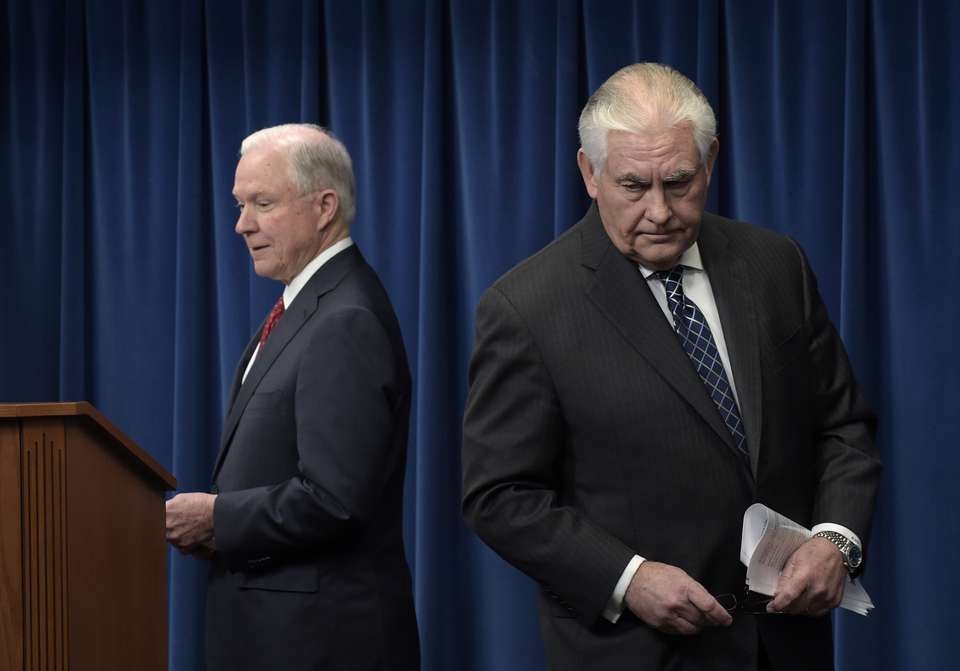Trump administration to reveal revised travel ban
President Donald Trump signed a revised executive order on Monday that removes one nation from the list of majority-Muslim nations barred from entering the United States but does little to relieve concerns of religious targeting.
Trump’s initial order had sparked worldwide outrage and chaos at airports around the country as travelers were detained before being sent back overseas or blocked from getting on airplanes abroad.
The new travel ban, Sessions said, is “a vital measure for strengthening our national security” and underscored President Trump is exercising his “rightful authority” as president.
Under the revised order, citizens of six-targeted countries holding a valid visa can enter the United States. It also pauses for 120 days resettlement to the USA of refugees from anywhere in the world.
Today, Trump rescinded that order and replaced it with a 90-day ban, effective 16 March, on entry of nationals from Iran, Libya, Somalia, Sudan, Syria, and Yemen.
Individuals from the identified countries are banned for 90 days.
The Iraqi government agreed to share more data and intelligence about its citizens with the U.S.
A Facebook statement on Monday by Omar Jadwat of the ACLU said, “The Trump administration has conceded that its original Muslim ban was indefensible”.
In stark contrast to the chaotic, nearly shambolic manner in which the president’s first order was rolled out, this new, amended measure was accompanied by a televised appearance by three of his most senior officials. “We have no other option”, said Secretary of Homeland Security John Kelly, at a press conference to announce the presidential decision.
“There’s still gonna be issues with the executive order”, said Yesenia Villasenol, a volunteer attorney. Islam was also the world’s fastest-growing religion, and its number of followers was expected to exceed Christianity by 2070. It was ambiguous after launch whether green card holders would be affected and some card holders were affected in the first few days following the first order’s signing.
The new order also addresses legal challenges that derailed the initial bans: It phases in over two weeks instead of taking effect immediately and won’t affect green-card holders or those with valid visas as of January 27.
Current green card and VISA holders are not impacted. But that language was not in the executive order itself, as judges noted in their critiques of the policy.
The new executive order still has the original’s 120-day ban on the entry of refugees from all countries.
U.S. District Judge James Robart issued a temporary restraining order against the Trump travel crackdown, a restraining order later upheld in a unanimous decision by a three-member panel of the U.S. 9th Circuit Court of Appeals.
“I think people will see six or seven major points about this executive order that do clarify who is covered”, she said.
Federal Bureau of Investigation is now investigating 300 individuals admitted to the United States as refugees for potential terrorism related activities. The U.S. will give those countries 50 days to improve their standards.








